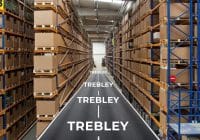Choosing between ERP and MRP can be confusing. This guide breaks down what each system does, their key differences, and which one fits your business needs.
What is ERP?
ERP (Enterprise Resource Planning) is a comprehensive software system that integrates all major business processes into a unified platform. It goes beyond inventory management to manage the entire organization, including:
– Finance and Accounting
– Human Resources (HR)
– Sales and Marketing
– Supply Chain and Logistics
– Manufacturing and Production Planning
– Inventory and Procurement
ERP systems provide real-time data across all departments, helping businesses improve decision-making, reduce costs, and enhance efficiency.
Key Features of ERP:
– Centralized database accessible by all departments.
– Integration of various business functions (finance, sales, HR, manufacturing, etc.).
– Real-time reporting and analytics.
– Advanced forecasting and planning tools.
– Examples: SAP, Oracle NetSuite, Microsoft Dynamics, Odoo.
What is MRP?
MRP (Material Requirements Planning) is a system specifically designed to manage manufacturing and inventory control. Its primary goal is to ensure that materials and products are available for production and delivery to customers.
Key Features of MRP:
– Calculates material requirements based on Bill of Materials (BOM).
– Focuses on scheduling production and procurement to meet customer demand.
– Controls inventory levels to avoid stockouts or overstocking.
– Uses Master Production Schedule (MPS) to plan manufacturing activities.
– Examples: Fishbowl Inventory, Katana MRP, MRPeasy.
Difference Between ERP and MRP (Comparison Table):
| Aspect | ERP (Enterprise Resource Planning) | MRP (Material Requirements Planning) |
| Scope | Covers all business processes (finance, HR, sales, inventory, manufacturing). | Focuses mainly on materials, production planning, and inventory control. |
| Functionality | Integrates multiple departments for a complete organizational view. | Primarily manages production schedules, inventory, and procurement. |
| Data Flow | Centralized data across all departments. | Data mostly limited to manufacturing and supply chain. |
| Goal | Optimize overall business operations. | Ensure timely availability of materials for production. |
| Complexity | More complex and broader in scope. | Less complex, specific to production needs. |
| Reporting | Offers advanced, cross-departmental reports and dashboards. | Provides inventory and production-focused reports. |
| Examples | SAP ERP, Oracle NetSuite, Odoo. | Katana MRP, MRPeasy. |
| Inventory Control | One of many functions, integrated with finance, sales, and logistics. | Core focus, managing raw materials and finished goods. |
How ERP and MRP Relate to Each Other
– MRP is often a module within an ERP system. Modern ERP systems (like SAP or Oracle) have built-in MRP functionalities to handle manufacturing and inventory.
– MRP is narrower, ERP is broader. If a company only needs inventory and manufacturing planning, MRP software may be enough. But for growing companies that need integration across multiple business functions, ERP is essential.
Which One Should a Business Use?
– Choose MRP if you are mainly focused on production scheduling and inventory control without needing complex financial or HR management.
– Choose ERP if you want a complete solution that integrates inventory with sales, finance, HR, and other business areas.


